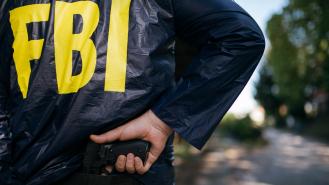
5 nail-biting criminal sieges and standoffs
Almost 30 years have passed since the final day of the Waco siege - an operation that sought to bring down a cult in Texas that ended in death and devastation. Only two years after the end of the first Gulf War, every moment of the Waco Massacre was televised with rolling coverage, reminding the TV-watching world that violent conflict between two polarised factions isn’t necessarily confined to military operations far overseas.
The siege began when David Koresh of the Branch Davidians was suspected of stockpiling weapons illegally in Mount Carmel Center ranch where his ministry was based. After the authorities failed to enter the building, a stand-off began and lasted for over a month and a half - from February 28th to April 19th, 1993. At the start of this violent event, a gunfight saw six Branch Davidians shot as well as four government agents. After 51 days, police opted to tear gas the compound and are also suspected of starting fires that led to the deaths of 76 Branch Davidians - among their number women, children and David Koresh himself.
The Waco massacre certainly served as a reminder that brutal sieges with high casualty counts and injury can burst into life far closer to home.
The Norrmalmstorg Robbery
The robbery of Norrmalstorg Square in Sweden, 1973 impacted the world of criminology because it birthed the phrase ‘Stockholm Syndrome’. Criminologists took note of the incident because, in the aftermath, it became clear that the hostages had bonded with and were sympathetic to their captors. The siege lasted five days and saw career criminal Jan-Erik Olsson attempt to rob a bank on the Square. Olsson had a history of armed robbery and was on leave from prison at the time of the attempted robbery.
After five days, the siege ended with no civilian casualties when police tear-gassed the bank and arrested Olsson and thankfully only one police officer was injured during the siege - and not fatally.
The Siege of Sidney Street
Here in the UK, in 1911 and into 1912, The Siege of Sidney Street took place in the East End of London after an attempted jewellery heist that saw three policemen killed. Also dead as a result of the bungled robbery was George Gardstein - the head of a Latvian gang who led the failed attempt. The remaining members of the gang had managed to escape the clutches of the police and were hiding out in Stepney at 100 Sidney Street and, once the officers had evacuated the area, a gunfight broke out.
The siege was short but intense, with the police feeling overwhelmed and calling on the army to bolster their ranks. As the incident came to a head, one of the suspects was shot, the building burned down and two bodies were found in the rubble. To add to the horror of the spectacle, the building later collapsed, killing a fireman.
Oka Crisis
Emerging from an ongoing land dispute that dated back to the 18th century, The Oka Crisis saw conflict arise between a Mohawk tribe and the town of Oka when a court saw fit to approve the expansion of a golf course in the territory. When the day came for the disputed area of pine forest to be cleared, the First Nations community formed a barricade around the proposed expansion site. Their cause was backed by a large section of the townspeople, as well as the country’s Minister of Native affairs. Eventually, the Emergency Response Team deployed tear gas and stun grenades, but the Mohawk people fought back, with the armed among their number growing in size from 30 people to 600. They also seized police vehicles in the midst of a firefight and used them to further barricade the area. Other tribes in the area formed barricades of bridges and roads to hinder the police from travelling to the site.
The police ultimately called on the army to join them and the 78-day siege ended with only two fatalities but with many injuries - and though the golf course was not expanded, the Mohawks never received their land back.
Ruby Ridge
In 1992, the Ruby Ridge siege began in rural Idaho after white supremacist Randy Weaver failed to report to authorities over firearms charges. This no-show led to a bloody armed stand-off based around his cabin, where he was holed up with his family and sympathetic associates, including family friend Kevin Harris who lived with him and was also wanted by the FBI. The gunfight broke out after months of surveillance on the family. Police surrounded their cabin, shot and killed the family dog and then subsequently opened fire on Weaver’s 14-year-old son and fatally shot him. A deputy US Marshall also died in the opening gunfight, leading to scores of agents surrounding the cabin.
The siege lasted ten days, in which time Weaver’s wife was also killed. Unaware that she had been fatally shot, agents continued to try and negotiate with her. The standoff only came to a head when Bo Gritz, a right-wing celebrity and former soldier, negotiated with the surviving members of the family to surrender. Though the siege was over with neither side coming out of it well, its legacy lives on in the form of documentaries, movies and even folk songs. It is generally agreed that, despite Weaver’s questionable politics, his only real crime was failing to appear in court, meaning the actions of the authorities were heavy-handed at best and violently oppressive at worst.






